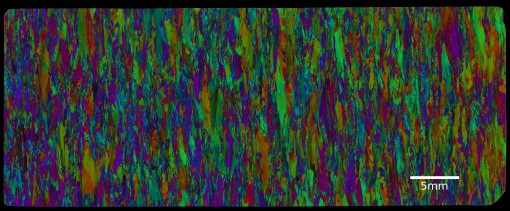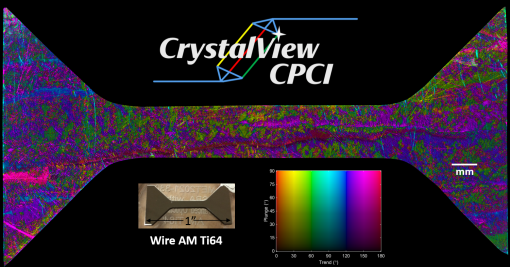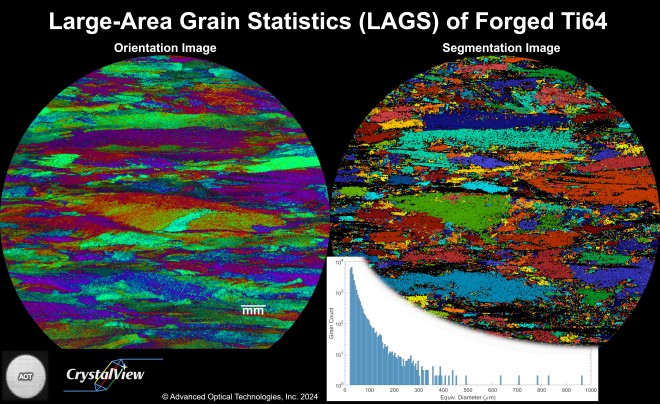
Crystallographic NDT Overview
CrystalView is the only patented laser polarized-light microscope (PLM) developed for quantitative large-area microstructure characterization with an instant field-of-view exceeding 2cm2. CrystalView is the first and only Quantitative Wide-Field PLM, offering the fastest imaging - 15 minutes including processing - and higher contrast than electron backscatter diffraction (EBSD) without pixel replacement. Microscopy Today recognized CrystalView as a top ten 2024 Innovation Award winner.
CrystalView’s fundamentally new design significantly outperforms computational add-on PLMs in terms of field-of-view, speed, material diversity, and surface tolerance, and its unique horizontal configuration allows crystallographic imaging of large and in-situ parts. CrystalView consolidates optical and orientation imaging, expanding microstructure visualization and analysis. CrystalView is the only true high-throughput crystallographic microscope for material research and production facilities.
Benefits
Measure Non-Destructively
Visualize crystallographic microstructure without cutting your parts
Expand Field-of-View
Obtain crystallographic orientation images 1" x 1" and larger
Improve Statistics
Capture low-frequency features
Reduce Cost
Reduce sample preparation and labor costs

Applications
The CrystalView microscope offers non-destructive, large-area, high speed orientation imaging for grain-boundary & microtexture analysis, process development, quality control, failure analysis, and other applications with non-cubic and cubic metals including titanium, zirconium, nickel, stainless steel, aluminum and most of their alloys. Systems can also be customized for oriented non-metals including ceramics, fiber composites, textiles, and plastics.
CrystalView allows visualization of material microstructural properties correlated with failure and corrosion probabilities in high-strength and high-performance parts for additive manufacturing, aerospace, automotive, chemical, defense, energy, architectural, and medical applications. CrystalView works in air and, as a parallel imaging technique, at much higher speeds and fields-of-view than scanning alternatives.
Large-Area Grain Statistics (LAGS)
CrystalView Large-Area Grain Statistics (LAGS) provides maximum confidence in crystallographic analysis. The image below demonstrates LAGS of forged Ti64 encompassing over 10,000 grains. The segmentation image was generated, consistent with ASTM E2627, in under 30 minutes on a standard laptop computer.

Related Publications
Quantitative Large-Area Polarized-Light Microscopy
Electrodynamic Solution for Polarized Reflectivity and Wide-Field Orientation Imaging of Uniaxial Metals
Polarized Reflectivity for Quantitative Crystallography of Alpha-Titanium
How can AOT help you?
Send us a message and we will get back to you within two business days.
